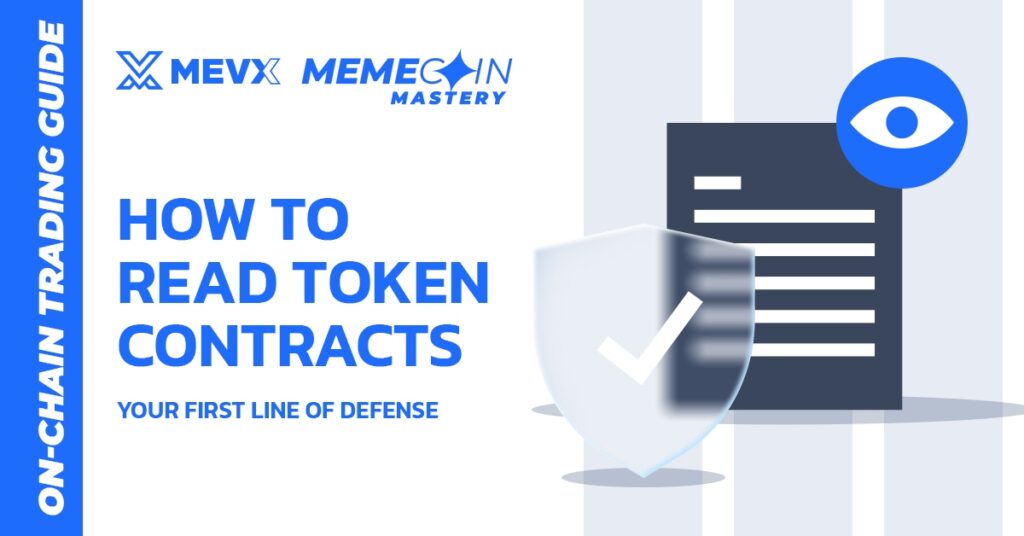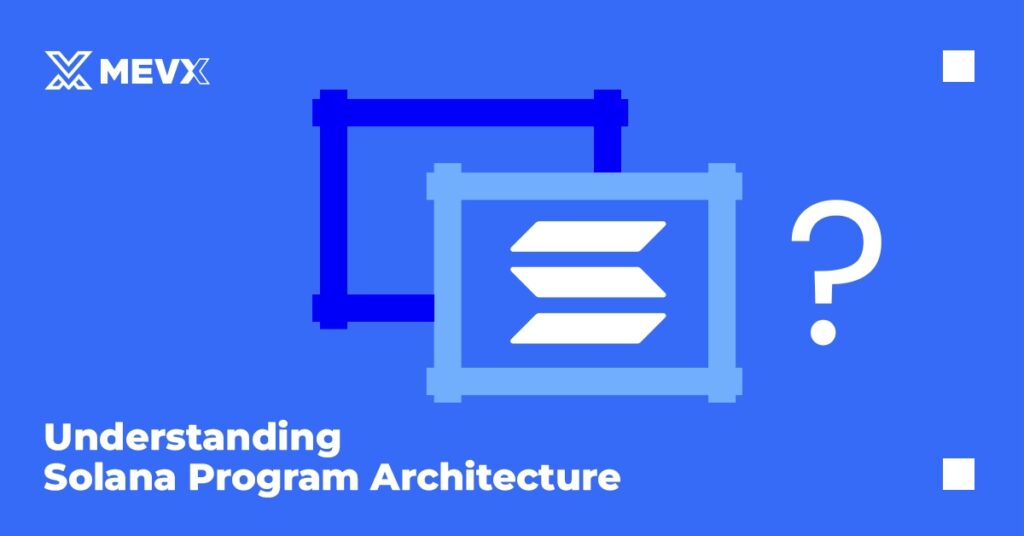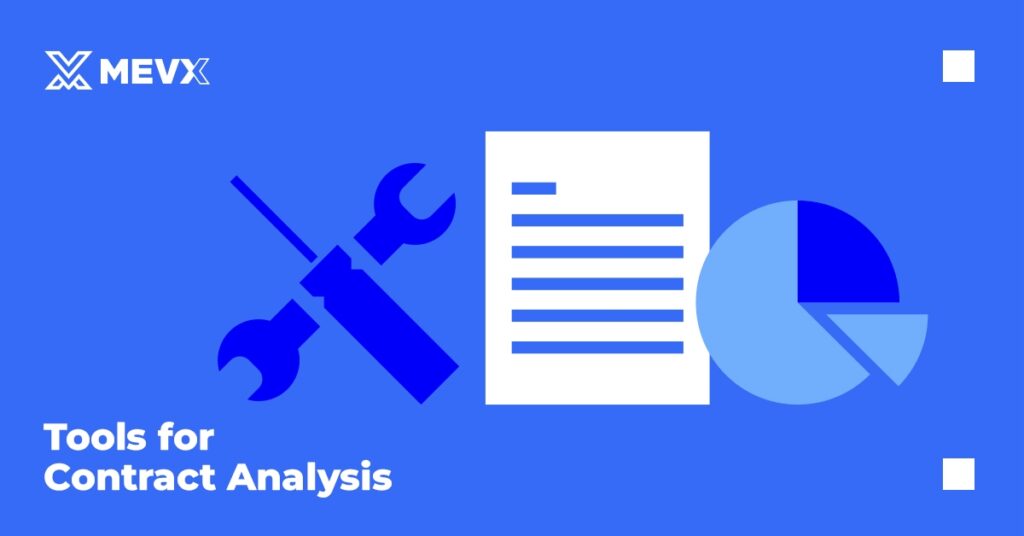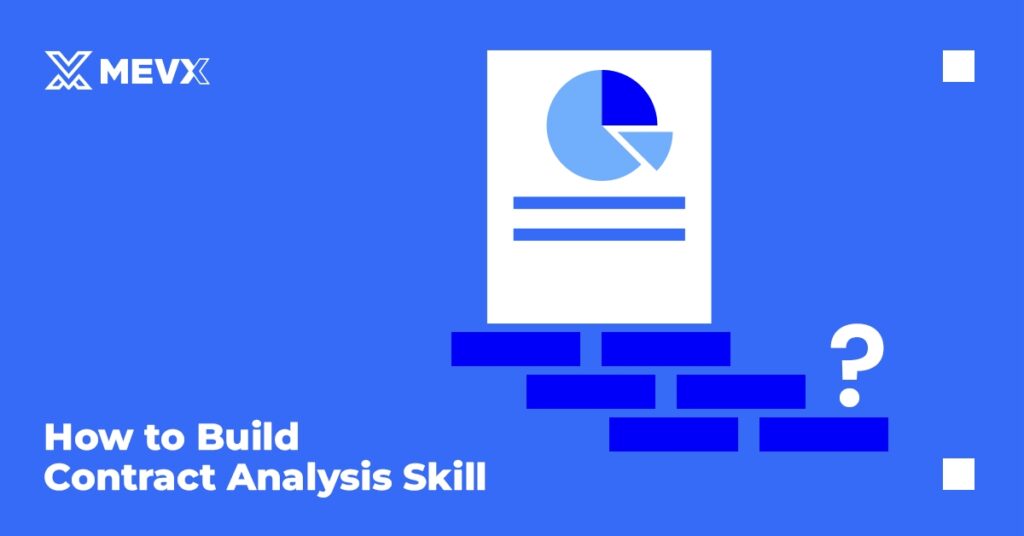Smart contract analysis is the most critical skill separating successful meme coin trading. Every token on Solana is governed by a smart contract, a program that defines how the token behaves, what permissions exist, and who controls them. Understanding how to read token contracts helps you identify both red flags and hidden gems.

Understanding Solana Program Architecture
Solana operates quite differently from Ethereum. Instead of having one contract per token, Solana uses a program-based architecture:
- Programs: The executable code defining token logic
- Accounts: Hold token balances, metadata, and permissions
- Instructions: Specific operations that can be executed (e.g., transfer, mint)
- Authorities: Entities controlling functions like minting or freezing
This separation means that analyzing a token requires examining both the program logic and the account authorities that control key functions.

The SPL Token Standard
Most Solana tokens follow the SPL (Solana Program Library) standard. This standard defines how tokens are created, transferred, and managed.
Key SPL components:
- Mint Account: Stores metadata and total supply
- Token Accounts: Represent balances for individual users
- Associated Token Accounts: Derived accounts that link a token to a wallet
- Program Authorities: Control sensitive operations like minting, freezing, or updating metadata
Tokens that deviate from this standard warrant extra scrutiny.
Key Contract Authorities and Their Risks
Certain authorities within a token contract determine its risk level. Understanding who holds these powers and how they can be used is essential.
Mint Authority
Controls whether new tokens can be created.
- Active Mint Authority: Can inflate the supply at will
- Null Authority: No new tokens can ever be minted
- Multisig Authority: Requires multiple signers to mint tokens
✅ What to look for: Prefer tokens with mint authority set to null or transferred to a secure multisig.
Freeze Authority
Can stop token transfers for specific wallets.
- Active: Risk of assets being frozen
- Null: Safer, no account can be frozen
- Multisig: Offers checks and balances
✅ What to look for: Most legit projects revoke freeze authority post-launch.
Update Authority
Allows changes to token metadata (symbol, name, images).
While less dangerous, it can be used for scams (e.g., impersonating popular tokens).
✅ What to look for: Transparency. If still active, ensure it’s controlled by a known entity or multisig.
Identifying Malicious Code Patterns to Watch For
Experienced scammers often implement sophisticated mechanisms to trap traders. Learning to identify these patterns protects you from common attack vectors.
Hidden Transfer Restrictions
- Whitelist-only sales
- Sell-blocking timers
- Frequency caps on trades
These mechanisms trap unsuspecting buyers. Always test with small trades or simulations.
Honeypot Logic
Contracts that allow buying but block or heavily penalize selling.
- Hidden taxes that spike on sell
- Liquidity removal functions
- Asymmetric trade logic
Upgradeable Contracts
Solana supports proxy patterns that allow contract logic to be updated post-deployment.
- High risk if a single dev can swap logic at any time
✅ What to look for: Fixed implementations or locked proxies. Be wary of upgradeable tokens without transparent governance.
How to Read Token Contract – Tools for Analysis
Several tools can help you analyze Solana token contracts for on-chain trading efficiently, from basic explorers to advanced analysis platforms.

Basic Analysis Tools
- Solscan: Check authorities, token supply, and holders
- SolanaFM: Analyze program instructions
- Solana Beach: View account structures and activity
Use these explorers to quickly check:
- Current authority settings (mint, freeze, update)
- Token supply and distribution
- Recent program interactions
- Account creation patterns
Advanced Tools
- Rugcheck platforms: Auto-flag common scam patterns
- Simulation tools: Test buy/sell functions safely
- Contract verification: Match contracts against known templates
API Access (for automation)
- Metaplex API: Get token metadata and authorities
- Solana RPC: Direct queries to the blockchain
- Third-party security APIs: For bulk contract screening
Manual Contract Review: A Step-by-Step Guide
The following steps will show you how to build your own contract analysis skills.

Step 1: Quick Pre-Screening
Use explorers to verify:
- Mint, freeze, and update authority statuses
- Token supply and max supply
- Holder concentration (check if one wallet holds 90%+)
- Liquidity pool info
Step 2: Deep Dive
If a token passes pre-screening:
- Look at the program source code (if available)
- Verify if the token uses standard SPL implementation
- Simulate basic interactions (buy/sell)
- Cross-check behavior across multiple tools
Step 3: Risk Categorization
Build your own framework:
- High Risk: Active mint/freeze, unknown logic
- Medium Risk: Active update authority, some unknowns
- Low Risk: Standard SPL, all authorities null or multisig
Automated Contract Screening
Automated screening systems can filter out obvious scams while flagging potential opportunities.
Screening Criteria Development
Build screening criteria based on your risk tolerance and trading strategy:
- Authority requirements: Specific authority configurations you consider acceptable
- Supply parameters: Token supply ranges and distribution patterns
- Liquidity thresholds: Minimum liquidity requirements for trading
- Holder criteria: Acceptable holder concentration levels
Integration with Trading Workflow
Integrate contract analysis into your trading process:
- Pre-trade screening: Automatically analyze contracts before trading
- Alert systems: Notify when contract authorities change
- Watchlist monitoring: Track contract changes for holdings
- Performance tracking: Monitor success rates of different screening criteria
Quick Checklist – Your Onchain Intelligence Starter Kit
Before you buy any meme coin on Solana, answer these questions:
- Is the mint authority revoked or held by a multisig?
- Has the freeze authority been disabled?
- Who controls the update authority?
- Is the contract using standard SPL logic?
- Are there sell restrictions or honeypot behavior?
- Has the liquidity been locked, or is it removable?
- Is the token highly concentrated in a few wallets?
- Has the program been verified or audited?
If you find them overwhelmed, why don’t you visit the MevX platform, an all-in-one trading tool that gives you all you need in trading.
Final Thoughts
Learning how to read token contracts isn’t just a defensive tactic; it’s a core edge for meme coin traders. In a market where scams are common and volatility is extreme, your ability to rapidly assess a contract could be the difference between making a 10x or losing it all.
Stay sharp, stay skeptical, and treat every new token as a case study in trust. The more fluently you read smart contracts, the clearer the truth behind the hype becomes.
In the next article, we’ll dive into liquidity analysis: how to assess token trading environments and spot liquidity traps before they spring shut.
Share on Social Media:
